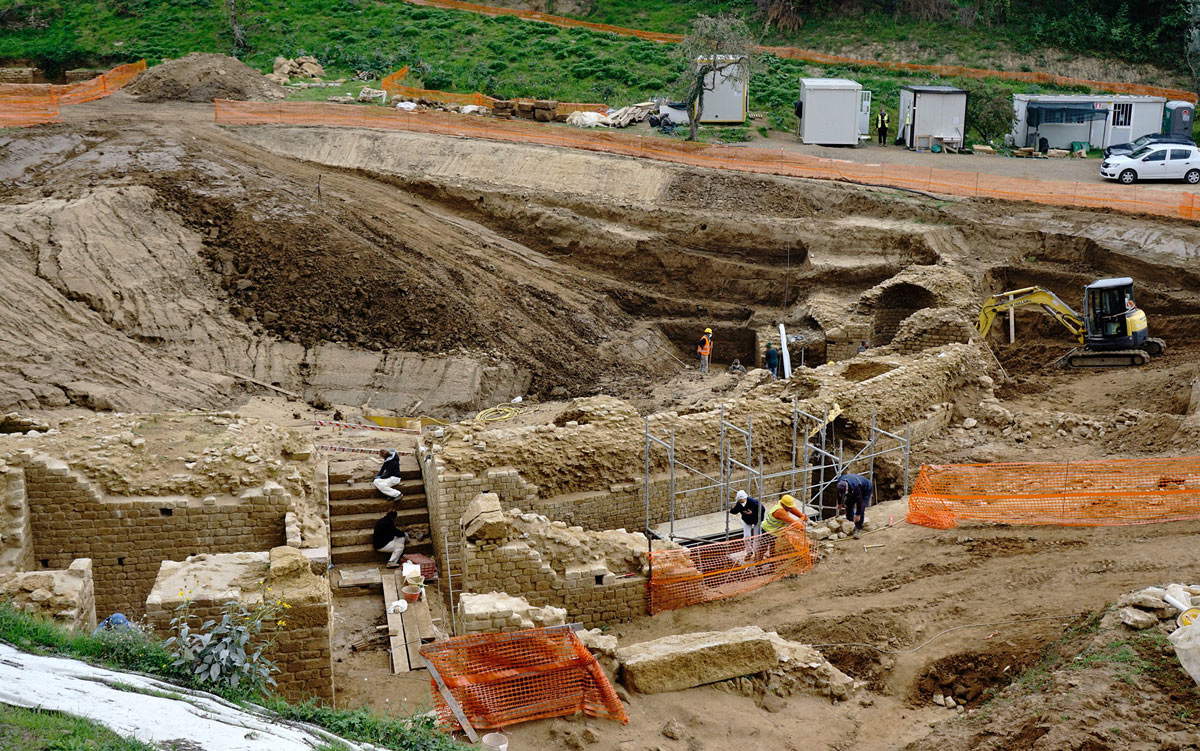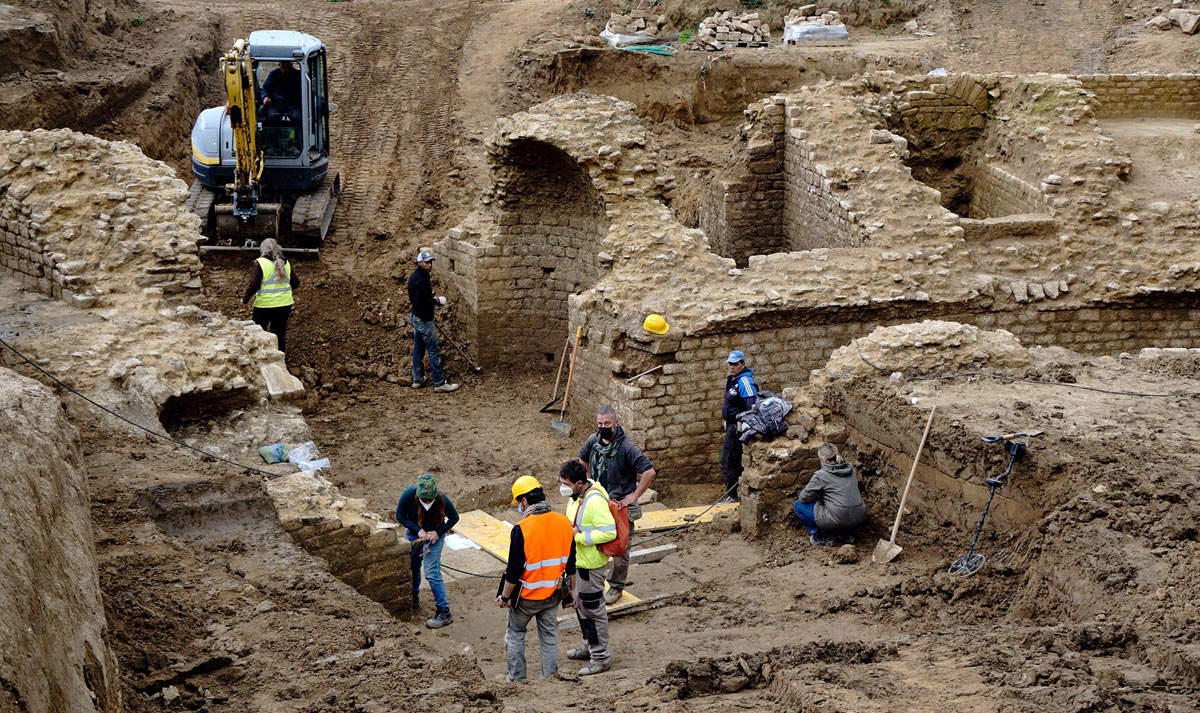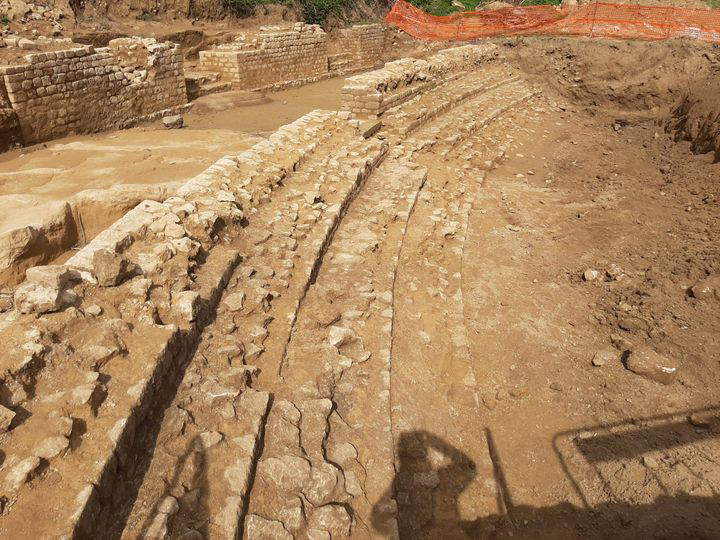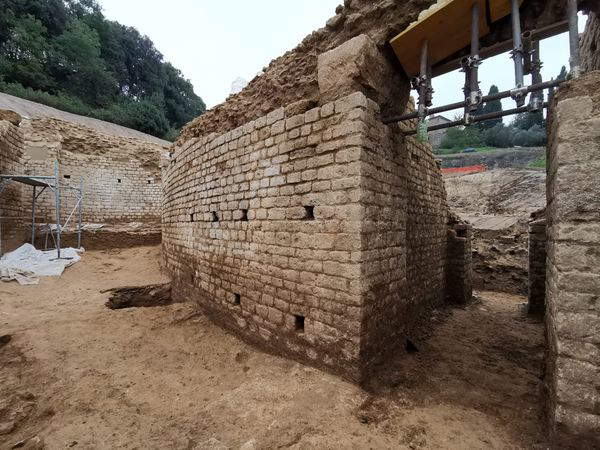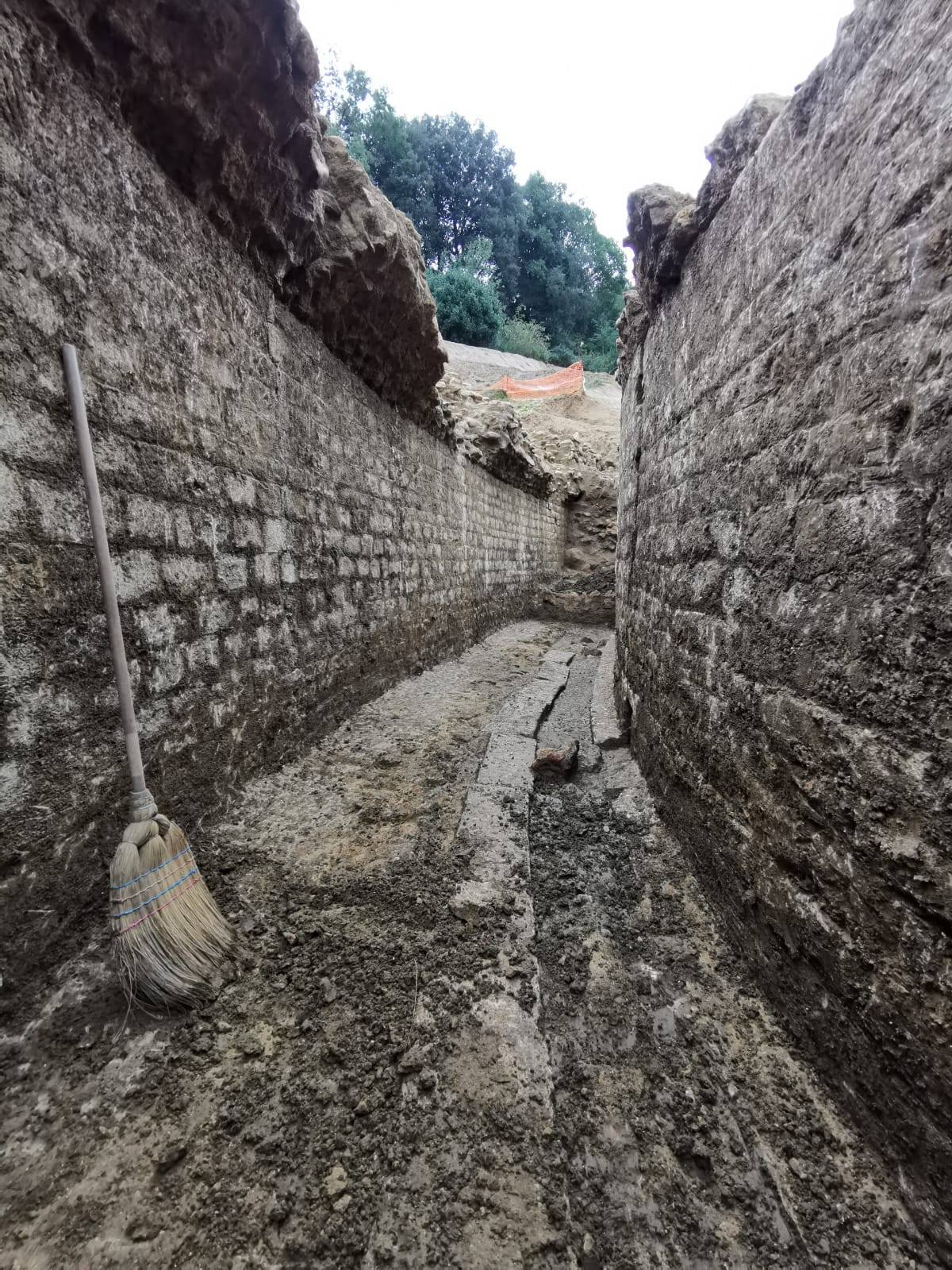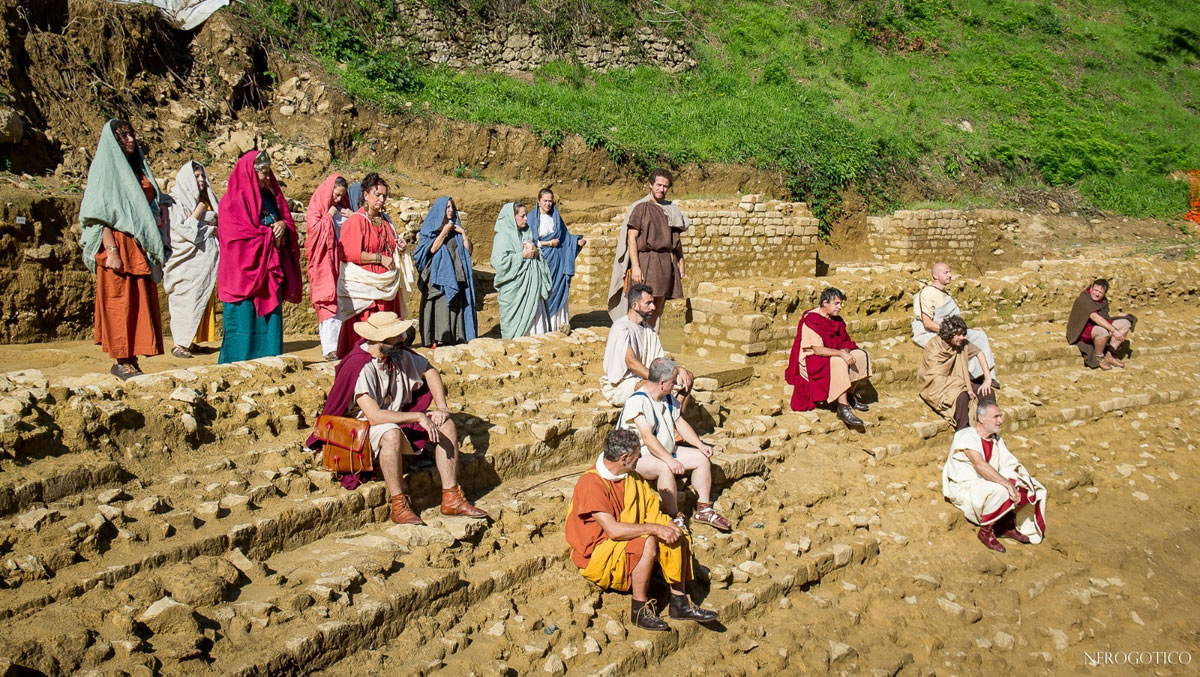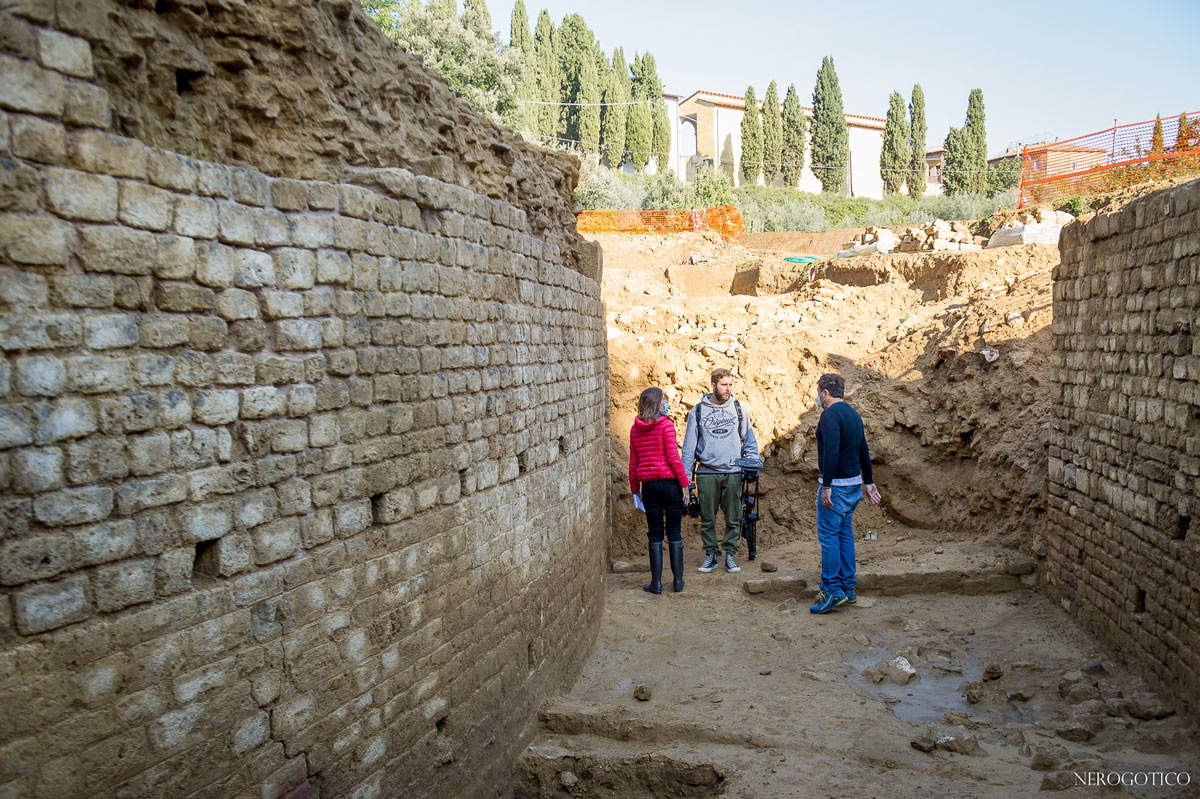by Redazione , published on 29/12/2020
Categories: Archaeology
/ Disclaimer
It will be remembered as the archaeological excavation of 2020: the Volterra Amphitheater, discovered in 2015, has been thoroughly excavated since 2019 and this year revealed outstanding discoveries.
In archaeology, 2020 will probably be remembered as the year of theVolterra Amphitheater: this year, in fact, the excavation campaign of the very important archaeological site discovered just five years ago resumed with vigor, bringing to light surprising and unexpected results. The most striking result, last September 1, was certainly the discovery of the system of underground ambulatories, hitherto buried in the hillside, which in ancient times spectators used, as in modern stadiums, to reach the bleachers from which they watched performances. In the following weeks, the vaulted corridor surrounding the arena, known as the “cuniculo circumpodiale,” was also discovered, and was used instead by gladiators and generally by those performing in the arena (it was the point from which any beasts exploited for the games also entered: these were not, however, tigers or lions, animals that performed in the larger structures as they were valuable and difficult to get in as well as to train for fighting, but rather, more likely, bears, wolves or otherwise more readily available animals).
The excavation is being overseen by the Soprintendenza Archeologia, Belle Arti e Paesaggio of the provinces of Pisa and Livorno and is directed by archaeologist Elena Sorge: since 2019 (the year operations began) it has been able to count on funding of just over eight hundred thousand euros, which arrived thanks to the Art Bonus competition and the participation of the Fondazione Cassa di Risparmio di Volterra, the Region of Tuscany and the Municipality of Volterra. Another three million will be needed to complete the excavation: but these are resources well invested, because an exceptionally important structure is emerging in Volterra, which is also well preserved.
The amphitheater was discovered by pure chance in the summer of 2015, during some work to restore a watercourse by the Consorzio di Bonifica 4 Basso Valdarno following a cloudburst: it is an oval of imposing dimensions (82 x 64 meters), which could accommodate from eight thousand to ten thousand people, and which is supposed to date back to the 1st century AD, but which in all likelihood was even inhabited in the Middle Ages (traces of life have been found such as remains of meals, hearths, coins: in the Middle Ages, in fact, amphitheaters were often modified and transformed into private dwellings). This discovery is all the more important considering that there are no historical sources mentioning the presence of an amphitheater in the Tuscan city, nor are the causes that led to its interruption known (the amphitheater was in fact buried under a hill). And that is why it has been renamed “the amphitheater that wasn’t there,” as per the title of the much-followed Facebook page that updates followers, day by day, with new discoveries, curiosities, work progress, dedicated press review: precisely because at the moment we know of no source that mentions it. A discovery that moreover makes it possible to rewrite the history of Roman Volterra, because the presence of such an amphitheater means that it was a politically and economically very important city, perhaps even more so than previously thought.
The 2020 excavation campaign, i.e., the second major extensive campaign after the 2019 campaign, brought to light a quarter of the structure. The arena still remains buried, which is at least seven meters underground, rising to twelve at the point of greatest interrogation. These days the superintendence is reasoning about how to continue the campaign in the months to come: a campaign that, given the particularity of the site (it is a very large and buried building, with the interro reaching different heights), will not be easy. In the meantime, this summer, also aided by the resumption of tourism, the Roman amphitheater in Volterra was partially opened for visits, organized under the patronage of the Region of Tuscany, the Municipality of Volterra, the Superintendence of Pisa and Livorno, the Volterra Museums and the Fondazione Cassa di Risparmio di Volterra: four days of opening that went immediately sold out and brought 240 people to the structure, divided into groups of 20 visitors.
It was on Dec. 21 that the Tuscany Region made available another 250,000 euros. “This is,” explained Dario Danti, councillor for Culture of the Municipality of Volterra, “an investment of 250 thousand euros from the region to the municipality, which adds up to the previous 250 thousand euros, also allocated by the region. The public has made and is continuing to make a great investment, because we should also remember the 60 thousand euros from the Municipality of Volterra for lacquisto dellquisto dell’area and the other 30 thousand euros spent on security. Bearing in mind also the 250 thousand euros allocated by the Mibact, so the public bodies (State, Region and Municipality) in two years have allocated as much as 840 thousand euros, to which the 250 thousand of the Fondazione Cassa di Risparmio di Volterra has been added, thus exceeding one million euros.” Now, added Tuscan Regional Council President Antonio Mazzeo, “we can look with certainty to the future of this important archaeological-cultural discovery. In that area, in fact, an extraordinary structure is emerging, both with regard to the state of conservation of the artifacts and that of the places. Properly enhanced and recovered the Roman Amphitheater will be a driving force for the growth of tourism in the area and the whole of Tuscany and one of the most interesting archaeological discoveries of recent years for the whole of our country. Which will also represent a potential trump card for Volterra’s run for Italian Capital of Culture 2022, to which all of Tuscany is committed.”
The campaign will therefore resume in the summer of 2021, and in the meantime, scholars from the superintendency will investigate the Florence State Archives in search of any written traces of the amphitheater. “For the excavation and related restoration,” Elena Sorge told Edible Culture magazine, “a sum of no less than 3 million euros is needed. To this sum should be added something like an additional million for the various anastyloses and for the creation of the visitor trails. If we then wanted to look even further, it would be necessary to rethink the entire road system in the area with the creation of parking spaces as well, and we are working with the Municipality of Volterra on this aspect.” The expectation is to complete the work in three years, but, Sorge has already said, continued funding will be needed.
Below are some pictures of the excavation. Ph. Credit Soprintendenza di Pisa e Livorno, Opaxir/Paolo Nannini and Nerogotico/Enrico Sabatini
 |
| Volterra Amphitheater |
 |
| Amphitheater of Volterra |
 |
| Volterra Amphitheater |
 |
| Amphitheater of Volterra |
 |
| Volterra Amphitheater |
 |
| Amphitheater of Volterra |
 |
| Amphitheater of Volterra |
 |
| Amphitheater of Volterra |
 |
| Amphitheater of Volterra |
 |
| Amphitheater of Volterra |
 |
| Amphitheater of Volterra |
 |
| Amphitheater of Volterra |
 |
| Volterra's Amphitheater: discoveries from the most astounding archaeological excavation of 2020 |
Warning: the translation into English of the original Italian article was created using automatic tools.
We undertake to review all articles, but we do not guarantee the total absence of inaccuracies in the translation due to the program. You can
find the original by clicking on the ITA button. If you find any mistake,please contact us.


